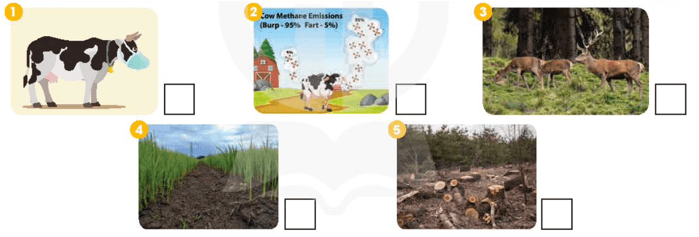Giải Tiếng anh Unit 5 lớp 11 Communication and Culture (trang 59, 60) - Global success
- 1Làm xong biết đáp án, phương pháp giải chi tiết.
- 2Học sinh có thể hỏi và trao đổi lại nếu không hiểu.
- 3Xem lại lý thuyết, lưu bài tập và note lại các chú ý
- 4Biết điểm yếu và có hướng giải pháp cải thiện
Everyday English
Giving and responding to warnings
Listen and complete the conversation with the expressions in the box. Then practice it in pairs (Nghe và hoàn thành cuộc hội thoại với các biểu thức trong hộp. Sau đó thực hành nó theo cặp)
Bài nghe
Jane: Hi, Nga. Is that a coal-burning stove?
Nga: Hi. Yes, my dad bought it last week. It heats up our home very quickly. Let me put in some more coal.
Jane: (1) _________________! You’re too close and will burn yourself!
Nga: (2) __________________. I’m very careful.
Jane: Yes, it feels very warm, but (3) _____________ burning coal produces soot.
Nga: Oh no, I didn’t know that. (4) ______________. I’ll tell my dad.
Work in pairs. Use the model in 1 to make similar conversations for these situations. One of you is Student A, the other is Student B. Use the expressions below to help you. (Làm việc theo cặp. Sử dụng mô hình trong phần 1 để tạo các hội thoại tương tự cho các tình huống này. Một trong số các bạn là Học sinh A, người kia là Học sinh B. Sử dụng các biểu thức dưới đây để giúp bạn)
1. Student A is burning rubbish. Student B is warning him/her about the dangers of open waste burning to people's health and the environment. (Học sinh A đang đốt rác. Học sinh B đang cảnh báo anh ấy/ cô ấy về sự nguy hiểm của việc đốt rác lộ thiên đối với sức khỏe con người và môi trường.)
2. Student B is building a campfire. Student A is warning him/her about the risk of starting a forest fire and the health risks. (Học sinh B đang đốt lửa trại. Học sinh A đang cảnh báo anh ấy/ cô ấy về nguy cơ bắt đầu cháy rừng và những rủi ro về sức khỏe.)
CLIL
Read the text and tick (V) the pictures that show ways to reduce global warming (Đọc văn bản và đánh dấu (V) vào những bức tranh chỉ ra những cách để giảm sự nóng lên toàn cầu)
REDUCING THE ENVIRONMENTAL IMPACT OF FARMING
Farming provides us with the food that we eat every day. But farming activities also have a strong warming impact on the global temperature. The good news is that experts have already started thinking about how to reduce it.
Raising farm animals like cows, goats, and sheep makes the planet hotter. There are billions of them and they release methane, a greenhouse gas that is much more dangerous than carbon dioxide. That is why scientists are developing methane-catching face masks for cows. They are intended to reduce methane emissions by up to 50 per cent per cow.
Another farming activity that heats the atmosphere is growing rice. According to research, emissions from rice farms have the same warming effect as about 600 coal plants. Flooded rice fields also make it easier for soil bacteria to produce greenhouse gases. New farming methods have allowed rice to grow well in drier fields, limit the amount of greenhouse gases, use less water, and produce better crops.
In addition, land-use increases the global temperature. Plants and trees use CO2 to grow and store large amounts of carbon underground. Cutting down or burning forests to create farm fields and land for feeding animals releases tonnes of carbon dioxide and other greenhouse gases into the atmosphere every year. Luckily, many countries and world leaders have agreed to protect the forests and end deforestation.
In short, there are some positive signs that farmers can meet the environmental challenges. However, although the impact of farming on the global temperature has been reduced, there is still much to do.
Work in groups. Discuss the following questions. (Làm việc nhóm. Thảo luận các câu hỏi sau)
What farming activities in Viet Nam do you think have negative impact on the global temperature? What do you think are the alternatives to those activities? (Bạn nghĩ những hoạt động nông nghiệp nào ở Việt Nam có tác động tiêu cực đến nhiệt độ toàn cầu? Bạn nghĩ những lựa chọn thay thế cho những hoạt động đó là gì?)

